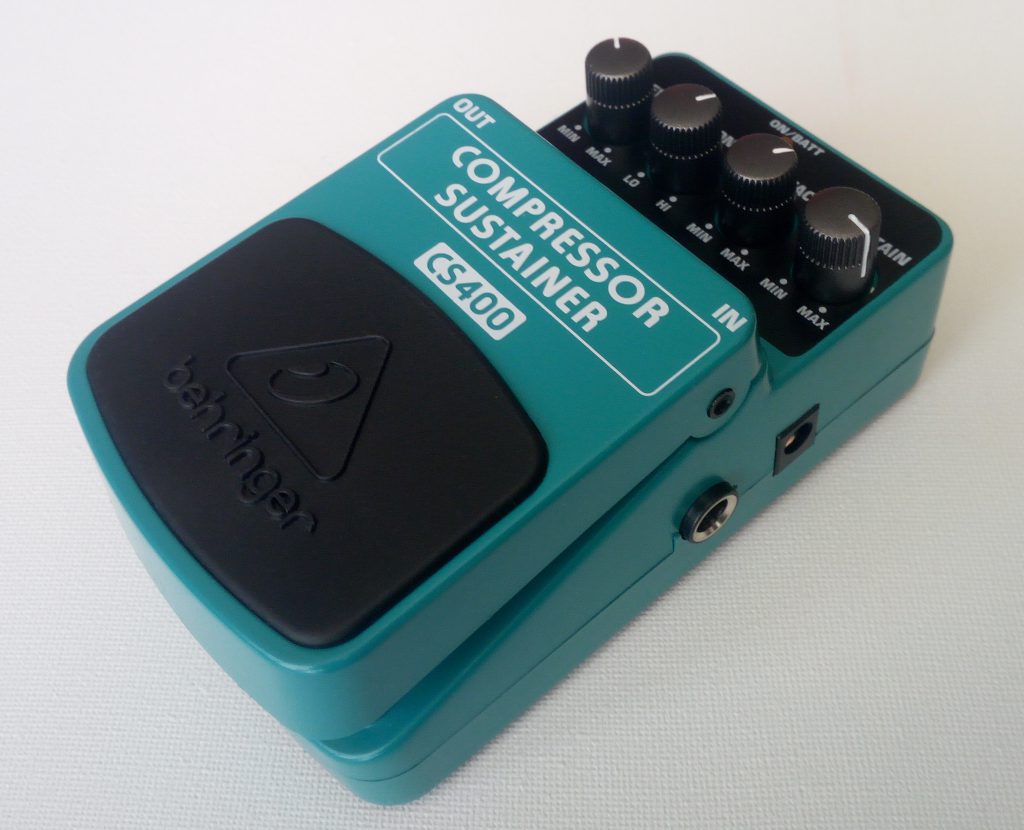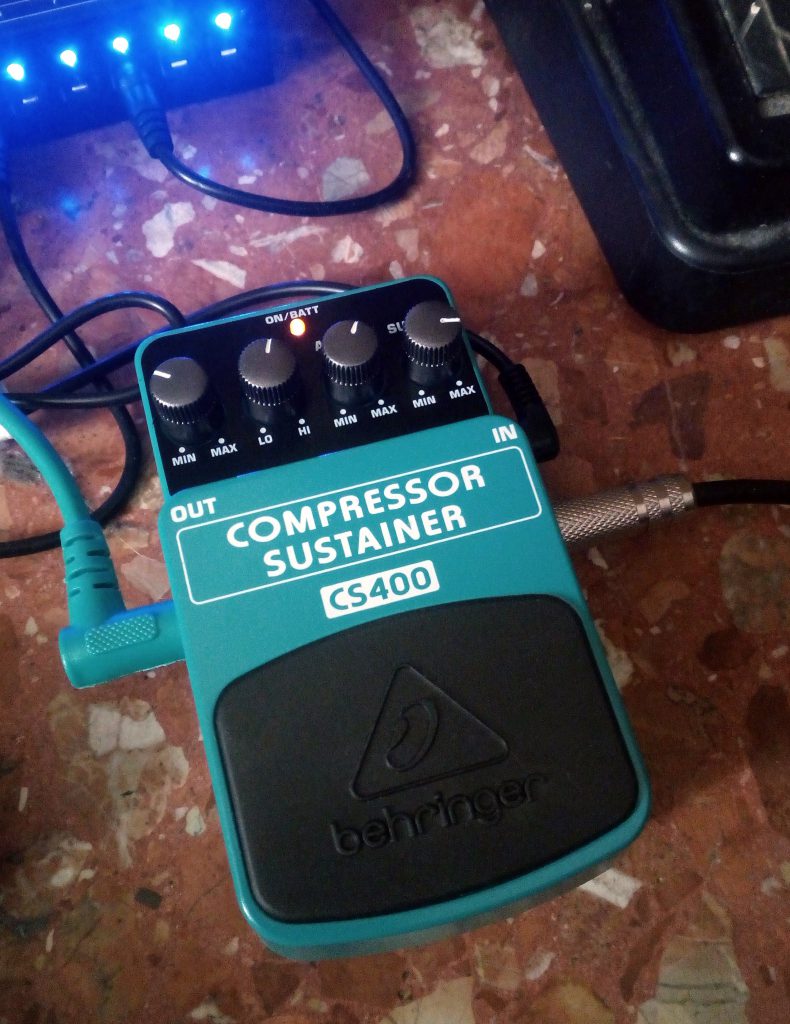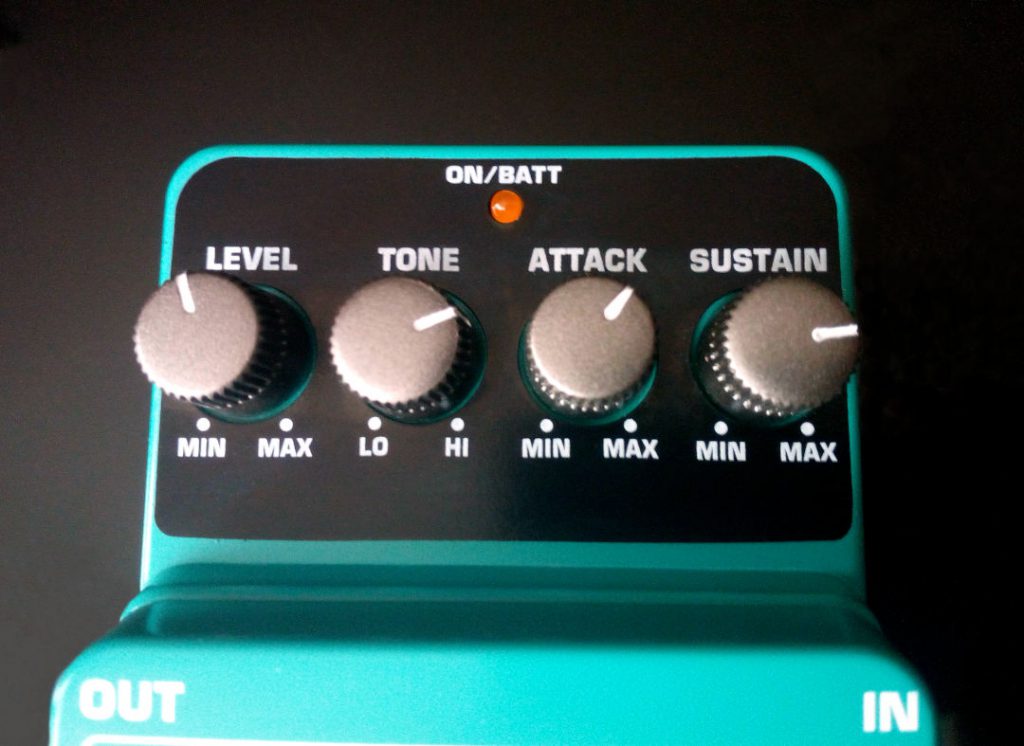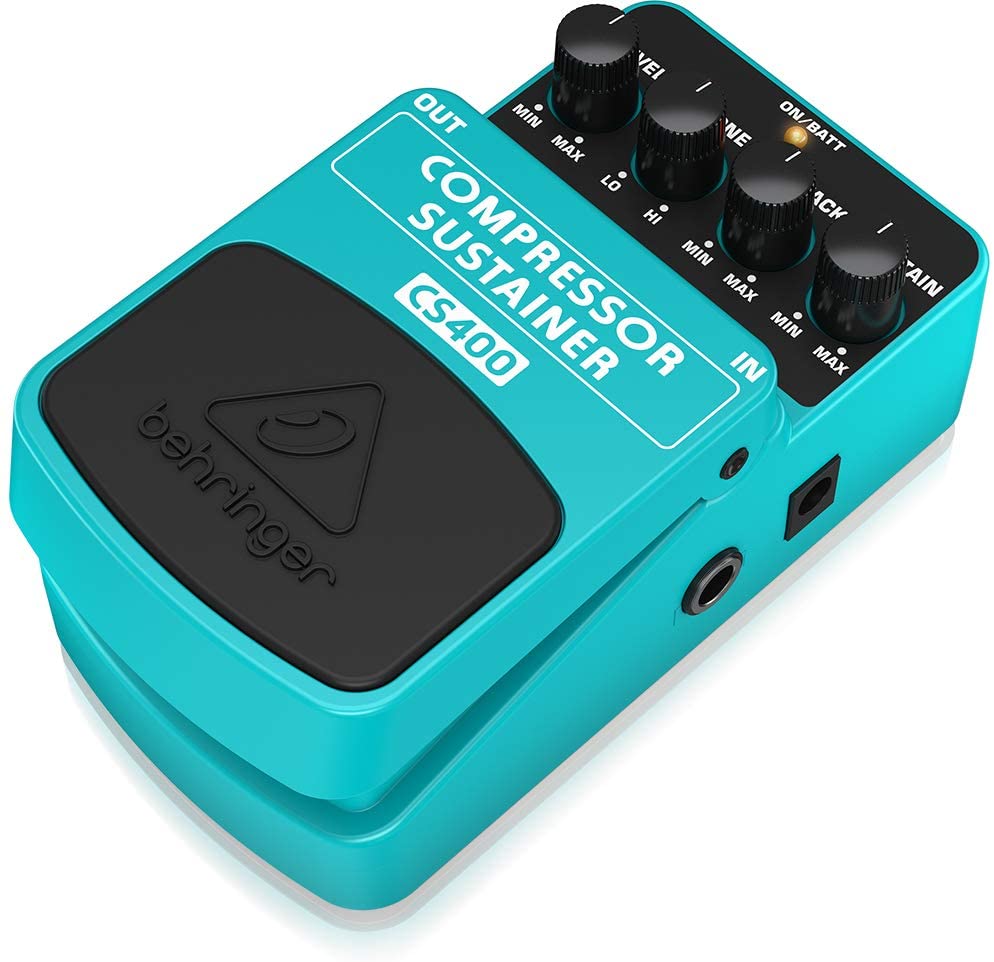
So I read some stuff about compressor and sustain pedals, and decided I wanted one. The question was, which one should I buy – there are so many different ones out there!
I originally planned to splash out a bit extra, as a Christmas present to myself, on the Boss CS2, as I had seen Chris Rea talking about his Boss CS2, on a YouTube interview I saw. I also read somewhere that Dave Gilmore, of Pink Floyd fame, used one too. It looked good – I wanted one!
The first problem I hit, when trying to buy myself a CS2 was – They don’t make the CS2 anymore – it would have to be the CS3 instead – but that didn’t sound too different – and for around 80€ I was gonna sound like Pink Floyd – for real!
The second problem I hit, which seemed more serious, was – The Boss CS3 had sold out pretty much everywhere I checked, and with Christmas speedily approaching, an alternative had to be found, and quickly! I decided to check out some other compressor/Sustainer pedals to see what my options were.
After watching some YouTube guys doing tests on lots of different compressor pedals, and reading up about them – I found a pedal that looked, and apparently sounded, almost identical to the Boss CS3 – That pedal was the Behringer CS400 – The added bonus was, the almost identical Behringer CS400 was considerably cheaper than the Boss pedal.
One YouTuber I watched, described the difference between the two as “this one is blue – This one is green!” Though in reality, the biggest difference seems to be – The Boss pedal is made of metal, while the Behringer pedal is made of hard plastic! The sound the CS400 makes, apparently, is indistinguishable from the Boss!
So reading some more stuff, and watching more YouTube videos on the subject, I made my choice, clicked the ‘buy’ button on the Amazon website, and waited for Santa to deliver my present.
I won’t bore you with details of my bacchanalian festivities on Christmas day, suffice to say, guitar pedals were not involved, and a couple of days were needed to recover sufficiently to be able to properly test my new toy.

The handy LED light comes on when the pedal is turned on, so you can see at a glance whether or not the pedal is active.
The pedal will not turn on unless there is a jack-plug inserted into the ‘in’ socket. This will save your batteries, should you be using batteries!
I have mine set up as the first pedal in my rig, as if I put a noisy pedal in front of it, those irritating noises, buzzes and hums, that some pedals make, would be amplified by the compressor!
While the casing may be made out of plastic, it seems quite durable, and although a big hammer could certainly smash the thing to smithereens, normal use, even quite heavy stomping, should not damage this quite robust, hard plastic casing.
This pedal has perfect pass – even disconnecting the power supply will not stop sound passing directly through it.
The Behringer CS400 didn’t come with it’s own power supply, most pedals don’t – though this is available separately. Without its own power adapter, your choices are:- a 9v battery, which is going to be expensive in the long run, as batteries don’t tend to last very many hours in pedals like these – or you could use your own 9v adapter, possibly using a daisy chain, if you have more than one pedal which uses 9v, though daisy chains tend to introduce unwanted noise into your system – Or you could plug it into your isolated power supply if you have one.
I plugged mine into an empty socket of my Donner DP-2 power supply, placed it as the first pedal in my sequence, with my trusty Fender Strat plugged directly into it, my amp at the other end, with the gain turned down. I pressed the pedal with my foot, to turn it on – The small LED light came on, the pedal was live. I strummed and I picked, I twiddled and I noodled – and I fiddled a bit with knobs!
l was wowed by the sound it made! The sound coming out of my amp sounded better quality, richer, smoother and fuller. Suddenly I sounded like a big league guitarist, instead of like somebody practicing in their bedroom. I had a pink Floyd sound, in a box that cost me just 24€!
It’s difficult to describe exactly what the pedal does to the sound, except make it sound somehow better, smoother, richer, more polished. It doesn’t have a massive noticeable effect, like a distortion or an overdrive pedal would have, radically changing the sound to something completely different. The CS400 does not change the sound of your guitar into a different sound, instead it enhances the sound you are already making.
The sound effect the CS400 gives is more complex, and while the sustain part may be obvious – it makes the notes last longer, instead of quickly fading away and dying, the sounds stays alive, and just keeps on going, on and on, like a happy pink Duracell bunny.
The compression part is more nuanced. The sound is better, but is is difficult to put your finger on just how! What is actually happening inside the box, is that the loudest sounds are being turned down, while the quieter sounds are increased – meaning you get a richer, and more even sound overall, which sounds… what is the word for it? – Ah yes, it sounds – ‘Better’!

The knobs have a good stiff feel to them – a nice firm feeling as you turn them.
There are four knobs on the CS400 you can fiddle with, though the first is the volume control, which doesn’t need much experimentation, or explanation – the others do!
The ‘Tone’ knob changes the tone, making the sound brighter or duller, thicker and gruntier or thinner and more whiny, if you know what I mean! – there is no massive difference from min to max settings, but you can adjust it to get the sound you prefer, depending on the type of sound you are trying to make.
The third knob is to adjust the ‘attack’, which gives another subtle change to the sound coming out, adjusting the speed at which the compressor kicks in with it’s effect. This is a fun knob to play with, especially in combination with the sustain knob, and can make a big difference in the amount of crunch or smoothness you get out.
The last knob, the sustain knob, is the master here. This is the knob that controls the amount of effect the pedal has on your sound. Turning it down to ‘min’, is virtually identical to having the pedal turned off, while turning up to ‘max’ will keep those notes going on and on and on!
It’s great to fiddle a bit with knobs, getting the right sound for the right occasion, different for each song or sound you are trying to make – or finding your favorite setting and leaving it there. I like to try the max, and then min for each dial, before settling for a Goldilocks zone somewhere in there – though I admit I like that sustain right up there near the max!
This pedal by itself makes almost no noise whatsoever, but it will amplify any small buzzing or humming sound that goes into it, whether that be from a noisy pedal that is in front of it, from noisy pickups on your guitar, or even from that background 60hz electrical hum that some systems seem to have problems with, often from unconnected nearby electrical appliances.
Old style TVs are one of the worst culprits for this – but anything that produces a magnetic field will cause this. You can soon tell if your pickups are picking up interference from a magnetic filed by simply moving your guitar about – you will be able to hear the bands of humming, and probably work out what is making the noise, as you get closer, or further away from the device that is causing it! If your guitar pickups are picking up background hum, this will be amplified by a compressor pedal.
This pedal amplifies any quiet sounds it hears, that is a big part of it’s job. Any and all small unwanted sounds going into the compressor that you don’t want, are going to be amplified alongside those quiet guitar notes that you do want to be amplified. This means your compressor pedal should probably be the first one on your pedal-board, plugged directly into the guitar, or perhaps behind a tuner, or other completely silent device, which will keep unwanted noise to an absolute minimum.
Anything else plugged in front of it, is going to introduce some kind of buzz or hum – which will be amplified and sustained – so don’t do it!
In conclusion, this is a great pedal, well made and effective. It doesn’t cost very much, but it makes my guitar sound way better. I am glad I bought mine, I am very happy with it! If it breaks I will buy another one!
So if you are in the mood to splash out a little bit of dosh, to get a sound that is more polished and professional, go visit Amazon now – and get one – Quick, before you change your mind! Or before they run out!
if you found this article useful, you can show your appreciation by buying me a coffee, or a beer at TimB.Green@BuymeACoffee.com or at TimB.Green@ko.fi – Many thanks to those of you who do so! You will find some pics and videos of me there – so Yay!
Or, for those who are, like me, a bit short on cash – you can just say ‘Thanks’ in the comment box below!



